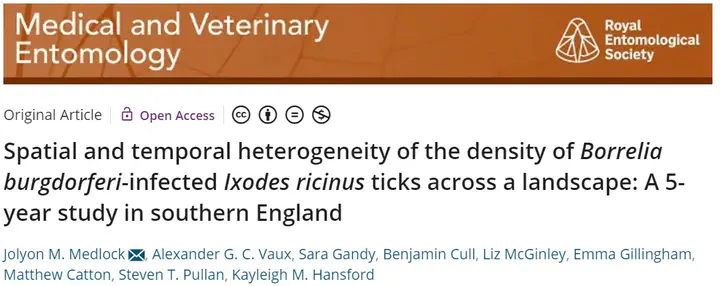Spatial and temporal heterogeneity of the density of Borrelia burgdorferi ‐infected Ixodes ricinus ticks across a landscape: A 5‐year study in southern England

Abstract
The density of Borrelia burgdorferi infected Ixodes ricinus nymphs (DIN) was investigated for five years across a Lyme disease-endemic landscape in southern England. The density of nymphs (DON), nymph infection prevalence (NIP), and DIN varied across five different natural habitats, with the highest DIN in woodland edge and high biodiversity woodlands. DIN was significantly lower in scrub grassland compared to the woodland edge, with low DON and no evidence of infection in ticks in non-scrub grassland. Over the five years, DON, NIP and DIN were comparable within habitats, except for one year, with NIP varying three-fold and DIN significantly lower. Borrelia garinii was most common, with bird-associated Borrelia (B. garinii/valaisiana) accounting for three quarter of all typed sequences. Borrelia burgdorferi sensu stricto was more common than B. afzelii. Borrelia afzelii was more common in scrub grassland than woodland and absent in some years. The possible impact of scrub on grazed grassland, management of ecotonal woodland margins with public access, and the possible role of birds/gamebirds impacting NIP are discussed. Mean NIP was 7.6%, highlighting the potential risk posed by B. burgdorferi in this endemic area. There is a need for continued research to understand its complex ecology and identify strategies for minimizing risk to public health, through habitat/game management and public awareness.